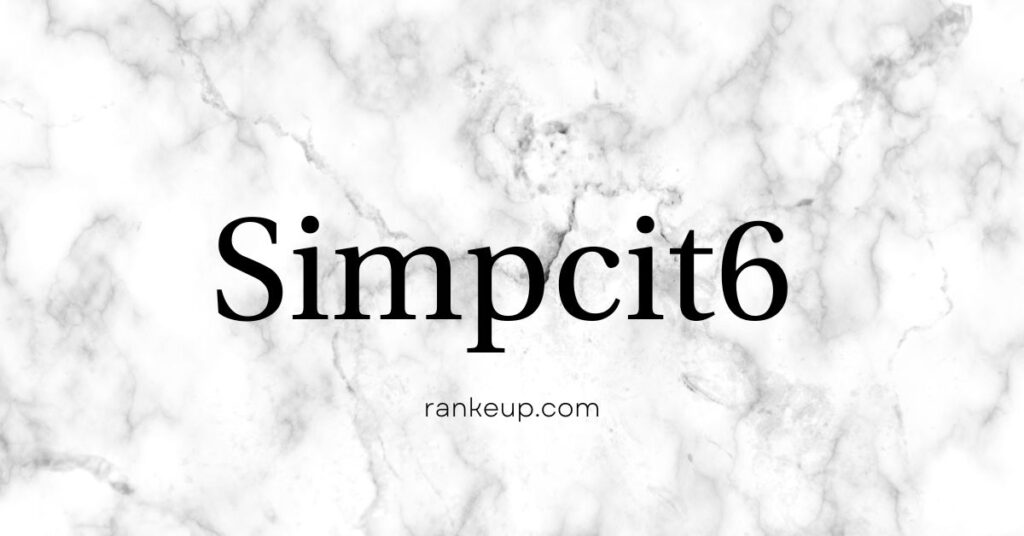Data visualisation has become an essential tool for understanding large datasets in the information era. In this context, custom maps are crucial because they allow us to interactively and intuitively display geographical information. Ùmap, a free and open-source mapping tool, is revolutionizing the way we make and use maps. Thanks to its intuitive design and wealth of features, Ùmap allows both people and businesses to create personalized interactive maps.
Understanding Ùmap
What is Ùmap precisely? Ùmap is a cutting-edge mapping application that allows users to create personalized maps to display data. Its powerful features, multitude of customization choices, and user-friendliness make it stand out. Ùmap caters to all levels of GIS expertise, from beginners to seasoned professionals. Anyone in need of comprehensive, interactive maps may rely on it due to its versatility and extensive feature set.
Key Features and Benefits
The versatility and user-centric design of Ùmap are its main assets. Users are able to communicate in real-time, personalize the look of their maps to their liking, and easily construct interactive maps on the platform. In addition, it works well with other programs and may be integrated to make them even more powerful. Because of these capabilities, Ùmap is an essential tool for mapping projects in a wide range of industries, since it streamlines the process of developing comprehensive and effective maps.
User-Friendly Interface
The intuitive UI is one of the most notable aspects of Ùmap. Ùmap is designed to be user-friendly for people of all ability levels, unlike other complicated mapping programs. A personalized map may be easily created from beginning to end thanks to the user-friendly design. The platform is easy to use and the learning curve is short for users. Thanks to its user-friendly interface and powerful features, even those new to the program may quickly and easily create maps that rival those of seasoned professionals.
Ease of Use
Users can easily drag and drop pieces, tweak settings with a few clicks, and see changes in real-time thanks to the intuitive interface. Ùmap nevertheless provides a full suite of capabilities for sophisticated users, so simplicity doesn’t mean functionality is sacrificed. Without much effort, even novices may make maps of high quality. Everyone, regardless of their level of technical knowledge, can make beautiful, functional maps using this platform.
Customization Options
Ðmap excels at personalization. To meet the needs of their projects, users may import data in several formats, change the colors and fonts, and choose from a number of map styles. Each map may be customized to meet particular aesthetic or practical demands, thanks to this degree of customisation. It is possible to improve the transmission of the desired message by customizing maps.
Creating Interactive Maps
Creating a map with Ùmap is a breeze. Here’s a quick guide to get you started:
Sign Up and Log In: Begin by creating an account on the Ùmap platform.
Create a New Map: Click on the “Create Map” button to start a new project.
Add Layers: Use the “Add Layer” feature to include different data layers on your map.
Customize Appearance: Adjust the map’s theme, colors, and fonts to match your preferences.
Add Interactive Elements: Enhance your map with markers, lines, shapes, and interactive pop-ups.
Save and Share: Once you’re satisfied with your map, save it and use the share options to distribute it.
With these steps, you can create a customized map that effectively communicates your data.
Customization Options
Map Themes
To establish the overall style of your map, you may choose from many different map themes. No matter your concept, Ùmap offers a theme that will suit you, whether you want a simple design or a comprehensive layout. Improving the map’s effect is possible with the correct theme selection.
Color and Font Adjustments
Make little adjustments to the colors and fonts used in your map to make it seem exactly right. The visual style of your map may be adjusted to match the needs of your project or the image of your business in this way. One way to keep a professional appearance is to use consistent branding.
Data Import Formats
A number of file formats, such as CSV, GeoJSON, and KML, may be used to import data into Ómap. You can effortlessly integrate your current data into your maps thanks to this versatility. Time and effort are both saved by data integration that runs well.
Real-Time Collaboration
Collaborative Capabilities
Get your coworkers involved so you can all edit the map at the same time. Everyone can see the changes happening in real-time, which promotes a more efficient workflow. Working together lessens the possibility of mistakes.
Enhancing Productivity
Ùmap shortens project durations and eliminates bottlenecks by letting several people work on a project simultaneously. When working on bigger teams or more complicated projects, this cooperative method really shines. Better achievements are achieved via teamwork.
ALSO READ>>>>developpez votre application m-commerce
Advanced Functionalities
Geocoding
To make it simpler to draw places on your map, geocoding lets you convert addresses into geographic coordinates. Applications like location-based analysis and delivery route planning make extensive use of this functionality. Verified geocoding enhances the trustworthiness of data.
Routing
With the routing feature, you can find the most efficient routes between any two locations on your map. Any endeavor requiring movement between several sites would benefit greatly from this, including logistics, city planning, and similar fields. You may save time and resources with efficient routing.
Integration with Other Tools
Third-Party Software Integration
Google Maps, GIS systems, and project management applications like Trello and Slack can all be integrated with Ùmap. With this, you can simplify workflow and communication procedures, which will make managing your mapping projects much simpler. Effortless incorporation improves performance.
Enhancing Data Visualization and Collaboration
More dynamic and interactive maps may be made by integrating Ùmap with other tools. For instance, you may increase your data analysis skills by integrating with GIS platforms, and your team’s collaboration can be enhanced by connecting with project management applications. Decisions are improved with the help of improved data visualization.
Applications Across Industries
Agriculture
Ómap can help local farmers optimize their agricultural rotations, improve field management, and monitor seasonal variations. Better yield management is the result of this. Farmer decision-making on planting and harvesting may be enhanced by the visualization of fields and crop data.
Wildlife Conservation
With the use of personalized maps, conservation groups can keep tabs on ecosystems and animal migratory patterns, which greatly assists with preservation efforts. Conservation measures are bolstered by efficient tracking. Better tactics for preserving endangered species may be devised by conservationists via the visualization of movement data and changes in habitat.
Urban Planning
In order to make educated judgments on city growth, urban planners might employ visualization tools to show transit networks, land use patterns, and population densities. Urban planning is enhanced by visual aids. Better and more long-lasting development plans may be made when planners examine metropolitan areas with the use of precise maps.
Maximizing Ùmap’s Potential
Experimenting with Layers and Styles
To discover the optimal method to display your data, experiment with various styles and layers. To make your map more informative and useful, use shapes, colors, lines, and markers to classify information. Try different things until you find what works. Maps that are both factual and aesthetically pleasing may be made by users by experimenting with various graphic choices.
Using Markers and Annotations
Annotations and markers may help you improve your maps by drawing attention to key features. To make your map more interesting and bring more attention to important data points, do this. Clear markings make text easier to read. Users may highlight crucial information on their maps by using graphic signals.
Real-Time Updates and Feedback
Get immediate comments and tweaks as needed. Doing so will keep your map current and relevant, reflecting any new information or ideas. Accuracy is enhanced by prompt feedback. The usage of real-time updates allows users to keep their maps up-to-date and accurate.
Embedding Maps
Sharing and Embedding Options
Spread your maps to more people by embedding them in websites, blogs, and social media. Your data may have an even greater effect and be more accessible if you do this. A wide reach increases exposure. Users may increase the number of people who see their data by embedding their maps on other web platforms.
Expanding Reach and Accessibility
Making your maps embeddable opens them up to more people, who may then interact with them and provide comments. This is especially helpful for projects that are visible to the public and community activities. Inclusivity is fostered via accessibility. The more people who can see and utilize these maps, the more invested they will be in their initiatives.
Case Studies and Real-Life Examples
Examples of Successful Ùmap Projects
To find out how other people have used the tool, look at case studies of Ùmap projects that have been successful. The platform’s potential may be shown and new ideas might be inspired by these instances. The key to success is learning from others. It is possible for folks to get fresh viewpoints and project ideas by looking at how other users have effectively using Ùmap.
Lessons Learned and Best Practices
In order to improve your own mapping efforts and prevent frequent mistakes, it is helpful to understand what did and did not work in previous projects. Better outcomes are achieved via learning from errors. Users may learn from the mistakes of others and implement best practices by looking at their own experiences.
Tips and Tricks for Users
Optimizing Map Performance
Using efficient design methods and optimizing data loading will keep your maps operating smoothly. Maps that are efficient improve the user experience. Users may provide a better experience for their audience by optimizing their maps for performance.
Common Pitfalls and How to Avoid Them
Be wary of typical pitfalls, such as piling too much data onto your map or ignoring principles of user-friendly design. Better maps may be yours if you steer clear of these problems. Being aware helps avoid problems. Users may make maps that are better for everyone by avoiding typical mistakes.
Conclusion
When it comes to data visualization and making bespoke maps, Ùmap is an incredibly strong and flexible tool. It is an indispensable tool for people and businesses in a wide range of sectors because to its intuitive design, personalization choices, and real-time collaboration capabilities. Unlock new prospects for development and efficiency in your projects by discovering Ómap’s full capabilities and combining it with other tools. Data visualization may be much improved using Ùmap, regardless of your profession: farmer, wildlife conservator, or urban planner.
FAQs
What is Ùmap?
Ùmap is an open-source mapping tool that helps users create and visualize custom maps. It offers a user-friendly interface and extensive customization options.
How can I customize my maps in Ùmap?
You can customize your maps by selecting different themes, adjusting colors and fonts, and importing data in various formats.
Can I collaborate with others using Ùmap?
Yes, Ùmap supports real-time collaboration, allowing multiple users to work on the same map simultaneously.
What industries can benefit from using Ùmap?
Ùmap is useful in many industries, including agriculture, wildlife conservation, and urban planning.
How do I embed a map created with Ùmap?
You can embed your Ùmap maps on websites, blogs, or social media platforms using the provided embedding options.


